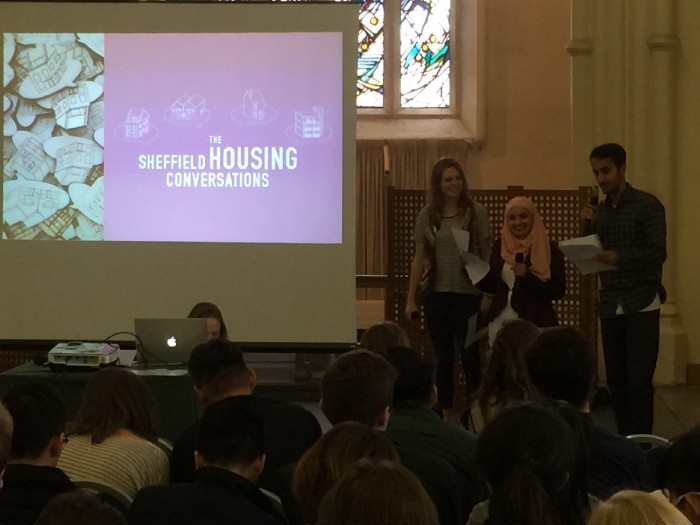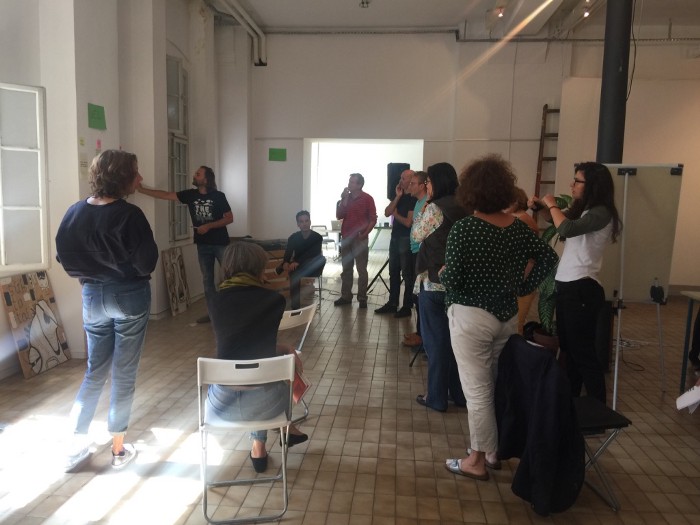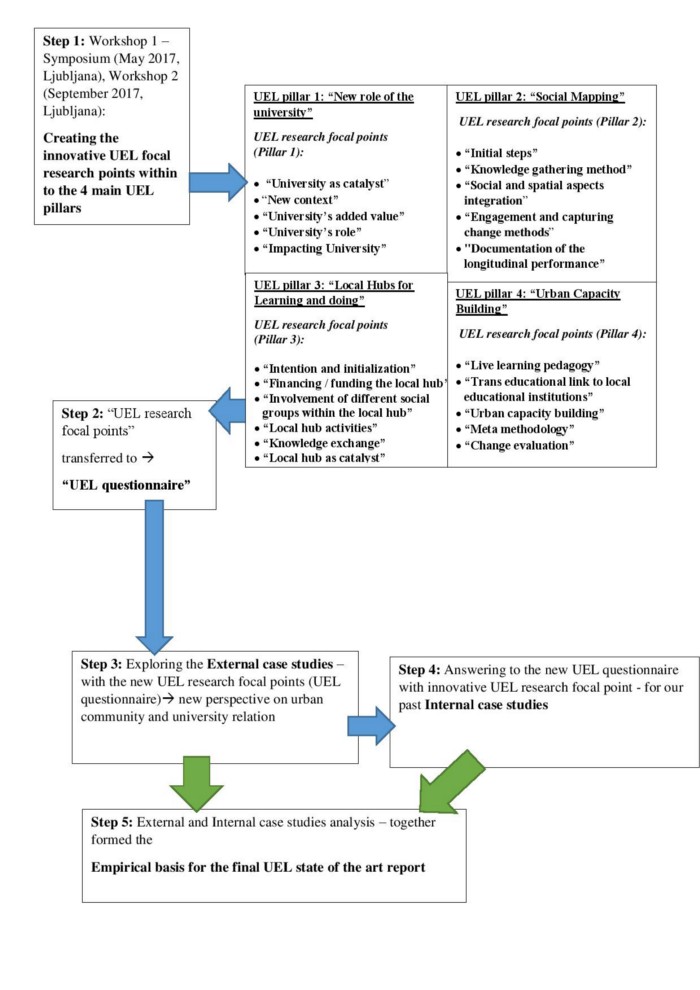In the last months our five UEL teams (University of Sheffield, University of Ljubljana, Ipop, Tampere University of Technology, Urban Transition Association) worked together on the preparation of “UEL — State of the art”. We have analysed our (UEL partners’) past projects (“Internal case study analysis”) and similar urban educational projects across the world (“External case studies analysis”) in order to individuate valuable innovative suggestions for our current Urban Education Live projects.
UEL consortium developed a set of four innovative approaches (pillars) for inclusive, vibrant and accessible urban communities. The four pillars were given the titles: 1. New role of the university; 2. Urban capacity building; 3. Social mapping; 4. Local hubs for learning and doing.
We have used these four set of innovative approaches as methodological tools, which have also served as an instrument / theoretical background to explore and analyse the past and current similar projects in a completely new way. With the new setting i.e. by using the model of four pillars was possible to analyse, identify and highlight new perspectives of understanding the relation between university and urban local community within each specific project.
A special research emphasis within the “UEL — State of the art” has been focused on the interaction of different stakeholders within urban — educational projects. We explored how the local community, Universities, NGOs and public bodies have collaborated with each other; what were the main obstacle and what were the benefits of such cooperation; what were the interesting innovative outputs that have emerged from such collaborations, etc. Merging different approaches / methodologies / academic perspective on the collaboration between different stakeholders, contributed to obtain an overview of innovative and sometimes unconventional university-community partnerships.
The collaboration between UEL partners has been very productive and inspiring. We have met and worked all together at theSymposium (May 2017) in Ljubljana, and again at the second Workshop in Ljubljana (September 2017), where we also developed an innovative set of »UEL research focal points«, which are relevant for the “UEL — State of the art”.
Picture 1: Working on the UEL — State of the art: Initial working process (Symposium — Ljubljana 2017)


The added value of the “UEL — State of the art” is represented with the established synergies between UEL teams with very different academic backgrounds (anthropology, architecture, urban sociology, environmental economy). Each team member with her / his academic background contributed to the analysis of the past projects with her / his particular analytical perspective. Due to high level of inter-disciplinarity, it was possible to construct an innovative transdisciplinary set of UEL key research focal points within the four UEL pillars (see Figure 1).
Figure 1: UEL — State of the art working process : formation / foundation of the main “UEL research focal points”

The UEL — State of art could enlighten the hidden innovative urban-community-educational elements of each past project that could potentially be used within our current UEL projects. UEL research focal points (within the four UEL pillars) represent the common research basis that all five partners are going to perform / study / research / implement in their UEL projects. The analysis of the internal and external case studies is especially relevant for the implementation of our current UEL projects, because it highlights the crucial points / indispensable approaches / innovative strategies, that could be taken in consideration in our current UEL activities. At the end of each pillar analysis (each chapter of the UEL State of the art), we have pointed out concrete applicable innovative elements / relevant discoveries that will be taken in consideration in our current UEL projects.
